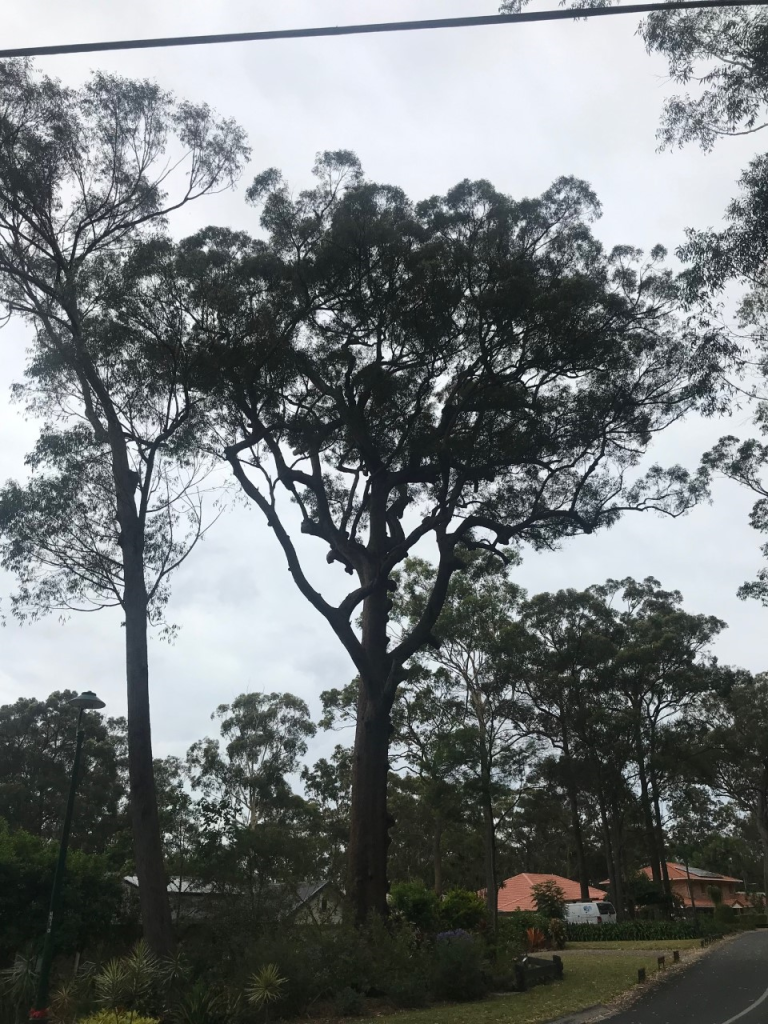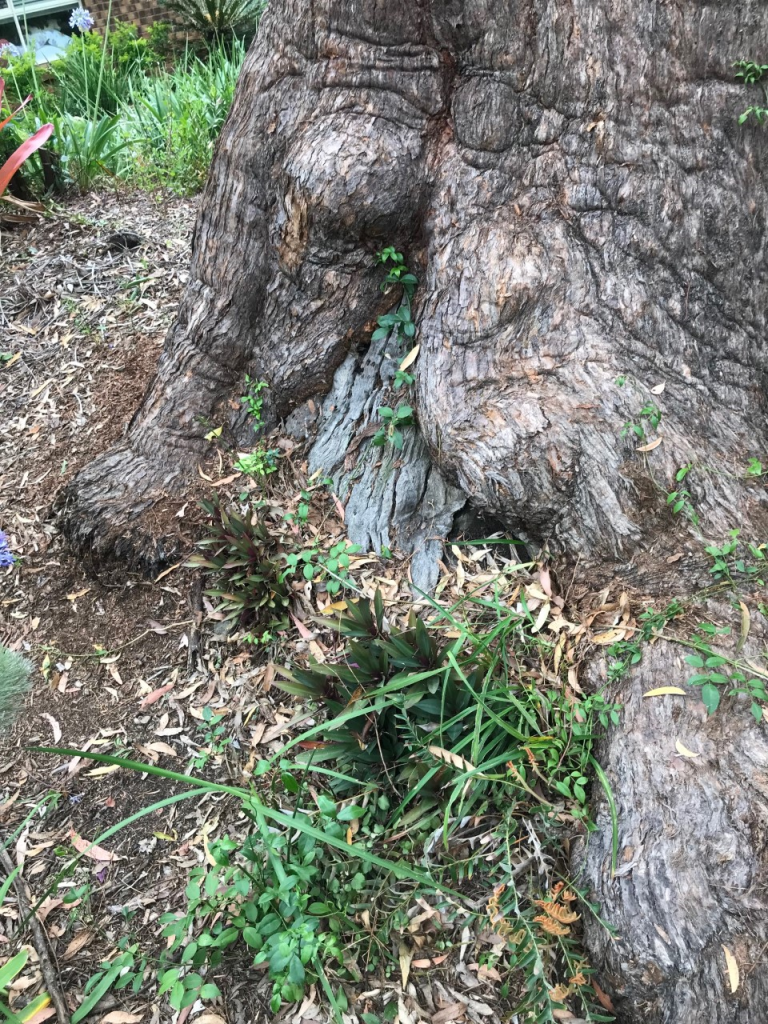
Height: 29.5 meters. DBH: 1.29 meters. Crown Spread: 19meters
Assignment:
Multiple requests directed towards local council from both the past and present resident of adjacent property concerned about the structural integrity of the tree. The tree is on a pro-active tree register, meaning it is inspected by a qualified arborist on an annual basis. Past actions have included a property side reduction, removal of deadwood and a fauna assessment which identified multiple active hollows in the tree.
Target and Site:
Targets include residential properties and a low use pedestrian walk way and road. Tree is within a landscaped garden bed created by a past resident (despite being on public land). There is a bush land reserve across the road (north west of tree) which offers the tree a significant level of protection from failure inducing wind speeds.
Tree Condition:
A visual assessment of the tree identified multiple points of decay at the root flare (see image 2) and in the upper canopy. Generally, wound wood formation at these points of decay was substantial. One point of interest in the crown is a weld which has formed, the lower union of this weld union had atrophied and died (see image 3 ). Crown density and foliage colour is normal for a tree of this age and species, suggesting that it is good health.


Analysis:
The visual tree assessment carried out on the tree identified no morphological features which would suggest that the tree or any of its parts will fail within the inspection period (annual). Substantial property side pruning has already occurred, meaning that any crown failures which occur are unlikely to impact the house. Due to the trees multiple active nesting hollows and its prominence within the landscape it has a high retention value.
Recommendations:
- Although the link between tree pruning and improved structural stability is tenuous due to a lack of research on the subject, I believe that a tip weight reduction of the limb above the weld point (pictured above) will reduce the torsional forces exerted on the union during a wind event.
- Further assessment of the trees root plate stability could be useful in strengthening an argument for the tree’s retention in the future. Elastometers and inclinometers attached to the base of the tree and left until the tree experiences a significant wind event will identify any shortcomings in the trees root plate stability.